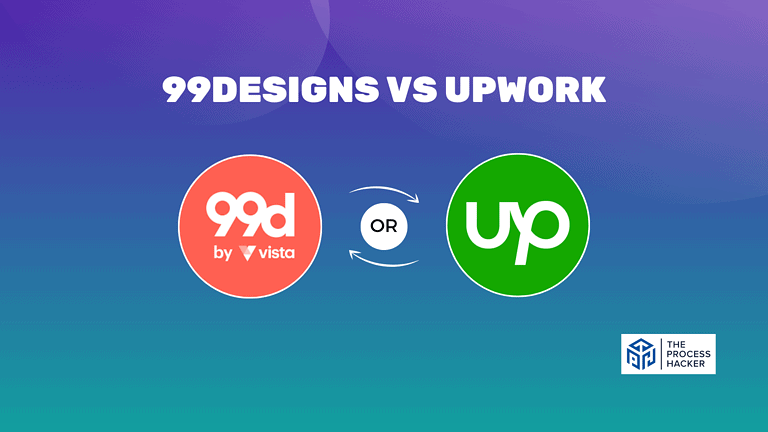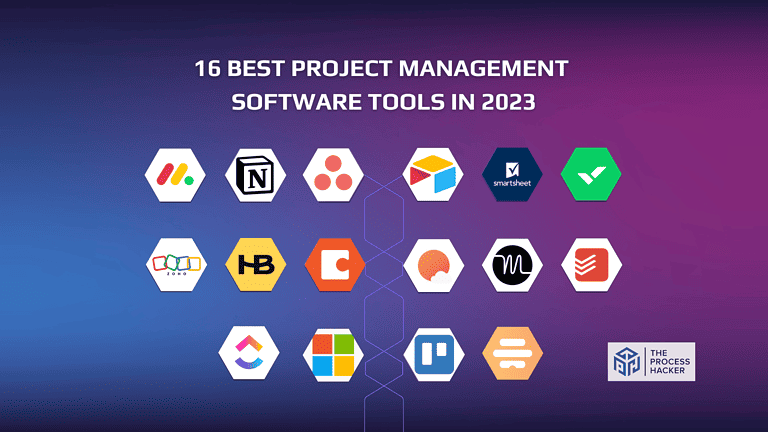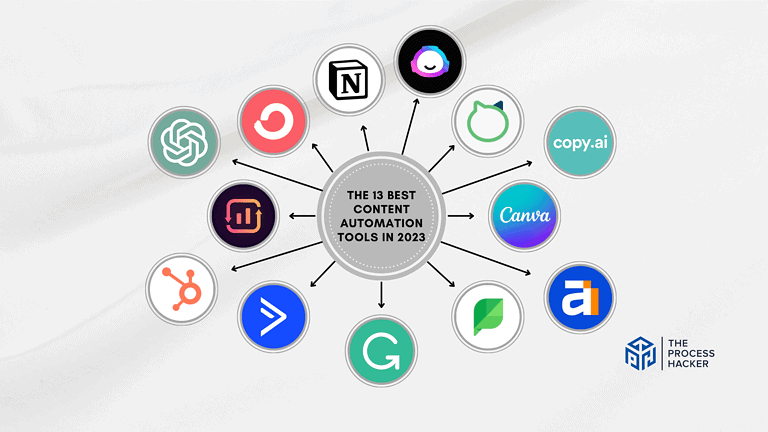Operations Automation: A Comprehensive Guide for 2024
In today’s fast-paced world of modern business, automating your operations is no longer a nice to have; it is a must-have in your business!
By streamlining processes and reducing manual tasks, you and your company can focus on growth and innovation while being competitive in your industry.
In this blog post, we will explore what operations automation is, why it is necessary, the benefits it brings to businesses, and how to implement it successfully. Let’s dive in and unlock the power of operations automation.
Bottom Line Up Front (BLUF) Summary
- Operations automation enables you, the entrepreneur, and your business to increase efficiency, reduce costs, and streamline tasks and processes.
- There are countless real-world examples of how operations automation provides value to today’s businesses.
- You can implement operation improvements in your business by determining your operational gaps, finding an automation solution, tailoring it to your needs, and continuously improving on it!
The Evolution of Operations Automation
The shift from manual processes to automated systems has revolutionized the way businesses manage their operations. Gone are the days when operations teams were bogged down with repetitive tasks and manual processes.
Instead, we now have access to powerful automation software tools driven by artificial intelligence that can handle complex tasks and help you make data-driven decisions in real time.
This transformation has not only streamlined operations but also allowed businesses to focus on more strategic and higher-level value-added activities, propelling them forward in an increasingly digital world.
From Manual to Automated processes
The transition from manual processes to automated systems has had a profound impact on various industries. In the past, internal business operations have been managed using organizational principles and typical office applications such as email, chat tools, spreadsheets, and meetings.
However, as technology has improved, small businesses are embracing automation technologies like robotic process automation (RPA) to save time and reduce people costs. In some instances, the average small business can reduce operating costs by 30 to 60 percent and improve the quality of their goods and services by automating manual, repetitive tasks.
And for employees, by enabling progress tracking and accountability in real-time, automated processes have improved efficiency, accuracy, and consistency in decision-making and results.
The Role of Artificial Intelligence (AI)
Recently, Artificial Intelligence has been playing a huge role in automating operations processes, which has allowed the automation of more complex tasks and improved decision-making capabilities.
In fact, AI-driven automation solutions have become a key component of many software tools. By combining AI with automation technologies, including the following:
- Chatbots, such as ChatGPT or Bard
- Automation management tools, such as Notion or ClickUp
- Productivity and scheduling, such as Reclaim or Motion
- CRM automations, such as Hubspot or Pipedrive
- Meeting assistants, such as Fireflies, Otter AI, or Krisp
- AI writing tools, such as Jasper AI or Grammarly
Using a combination of these tools, you can unlock new levels of efficiency and effectiveness in your operations.
As a result, you and your business will be better equipped to adapt to evolving market demands, deliver consistent service, and maximize the value of your automation efforts.
Key Components of Operations Automation
To successfully implement operations automation, you need to pay attention to three key components:
- Specialized Tool Implementation: Decide on the right software to help you streamline aspects of your operations, such as project management, scheduling, and IT operations.
- Business Process Automation: Focus on the repetitive tasks that you want to automate to improve your efficiency and reduce human resources.
- Digital Transformation: Enable you and your operations teams organizations to learn and leverage the new technology to optimize your operations and achieve business goals.
By leveraging these key components, you can optimize your operations, equip your people for success, and achieve sustainable growth in the digital age.
Operations Automation Tools
Keeping up with operations can be challenging in today’s fast-paced business environment. That’s where operational tools like Notion, HoneyBook, Loom, and others with built-in automation can be handy.
These tools allow you to automate repetitive tasks, streamline workflows, and boost productivity across your organization. Notion, for instance, can help you organize and manage your tasks, notes, and projects in one place, saving you time and streamlining your management and IT operations.
HoneyBook can help automate the client onboarding process, from proposals to invoicing. And Loom lets you record and share videos, tutorials, and demos with your team, customers, or stakeholders, making it a valuable tool for remote work and virtual collaboration.
By leveraging even one operations automation tool, you can simplify your operations, reduce manual errors, and focus on what really matters: growing your business.
Business Process Automation (BPA)
BPA is using technology to streamline and automate everyday business tasks and processes. This approach to organizing operations offers a range of benefits, including time savings, increased efficiency, and reduced costs.
By automating tasks such as data entry, report generation, and customer outreach, companies can free up their employees to focus on more creative and strategic work.
Two of my favorite tools for implementing BPA are Zapier and Notion. Zapier allows businesses to connect their favorite apps and automate tasks, while Notion provides a centralized platform for collaborating and managing projects.
Both of these tools can help companies streamline their workflow and improve productivity. Whether you are a solopreneur or part of a larger team, there are many benefits to incorporating business process automation into your operations.
Digital Transformation
Digital transformation refers to integrating digital technology into all areas of a business, resulting in fundamental changes to how it operates and delivers value to customers. Companies can streamline their operations, improve efficiency, and enhance customer experiences by adopting digital tools like automation, data analytics, and BPA.
But digital transformation isn’t just about technology; it also requires a cultural shift within the organization. Companies need to undergo digital transformation with their people.
Specifically, you must train and empower your employees to work well with the automation technology. With the right automation tools and training, your people will be more efficient and more collaborative.
This, in turn, results in increased job satisfaction, better employee retention, and, ultimately, more success for the company. By embracing digital transformation, you and your businesses can stay competitive in today’s fast-paced, technology-driven world.
Why You Should Implement Operations Automation
Implementing operations automation offers numerous benefits, including increased efficiency and productivity, reduced human errors, and streamlined management. By automating your manual tasks and processes, your business can dedicate more resources to strategic initiatives and innovation, driving business growth and customer satisfaction.
In addition, operations automation can help you optimize your operations and stay competitive in an increasingly automated and digital world. The advantages of implementing operations automation are vast, making it a worthwhile investment for businesses of all sizes and across all industries.
Enhanced Efficiency and Productivity
Automation enhances efficiency and productivity by:
- Eliminating manual tasks
- Allowing you and your employees to focus on higher-value activities
- Allocating your business resources more effectively
- Freeing up your employees to focus on strategic initiatives and innovation
This not only improves efficiency but also enhances overall service quality and customer satisfaction.
Furthermore, automation allows for:
- Real-time progress tracking and accountability
- Ensuring you and your team understand the status of your operations processes and any potential bottlenecks
- Continuous improvement and optimization of operations
- Driving sustainable and scalable growth
Reduced Human Error and Operational Costs
You can improve consistency while reducing human errors and operational costs by standardizing and automating your operations processes. Automated software and systems can handle tasks with greater accuracy, consistency, and efficiency than the average human, minimizing mistakes and ensuring that processes run smoothly.
Additionally, automation can help your business cut operational expenses, freeing up resources for growth and innovation. By implementing operations automation, you can save a considerable amount of money, which you can invest back into the business to further improve your overall operational efficiency.
Streamlined Operations Management
Streamlined operations management is possible when implementing automation, as it simplifies complex tasks and improves your overall workflow. By automating manual tasks and processes, you can ensure that your operations run smoothly and efficiently, allowing your management and operations team to focus on more strategic initiatives.
In addition, automation enables you to adapt to the market’s changing demands and deliver consistent service. Consistency is essential for maintaining a competitive edge in today’s increasingly digital world.
Choosing the Right Operations Automation Tools
Choosing the right operations automation tools involves figuring out the needs of your business and checking out the available options out there! By understanding your needs, we can help you choose the right automation tools for your automation journey!
In this section, we help you determine your needs and compare and evaluate different operations automation tools to make the right decision.
Assess Your Organization’s Requirements
First, consider factors such as the current state of your business processes, the complexity of the tasks you want to automate, and the resources available for implementation.
By identifying the most pressing needs and prioritizing the processes with the highest potential return on investment, you can ensure that your operations automation efforts are focused on the areas that will deliver the most value for your business.
Compare and Evaluate Options
Comparing and evaluating different tools allows businesses to make informed decisions and select the best solution for their operations automation needs. When evaluating operations automation tools, consider factors such as:
- Ease of use
- Integration capabilities with existing systems
- Scalability
- Ongoing support
By carefully assessing the available options and selecting the tools that best align with your organization’s needs, you can ensure the successful implementation of operations automation and maximize the benefits it brings to your business.
What Are Some of My Favorite Operations Automations Tools?
Operations automation tools are a game-changer for running a smooth business and operations team. As somebody who has utilized many of these tools, below are some of my favorites:
Zapier
Zapier is an automation platform that connects over 2,000 apps to automate tasks and workflows. You can create workflows, or “Zap,” by connecting different apps together and automating actions between them.
Notion
Notion is an all-in-one tool that seamlessly blends your notes, tasks, wikis, and databases in one place. Also, it helps you streamline your workflows with its built-in AI and automation features like scheduling reminders, automating repetitive tasks, and even building templates for you.
ClickUp
ClickUp is another excellent project management tool that enables you to create tasks, set deadlines, and assign them to team members. It has a variety of automation and integrations to help streamline your team and project management workflows.
HoneyBook
HoneyBook is a comprehensive CRM platform for small businesses. It offers various automation features, including task automation, lead tracking, and customizable forms for capturing leads.
HubSpot
HubSpot is a powerful automated CRM designed for businesses of all sizes. It allows you to automate tasks like scheduling meetings, sending follow-up emails, and tracking customer interactions. HubSpot also includes lead scoring, task automation, and personalized outreach options.
Overall, operations automation tools are essential for any business looking to optimize their workflows and increase productivity.
How to Implement Operations Automation
Implementing operations automation involves several key steps, including identifying the core processes, developing a plan, and monitoring progress for continuous optimization. By following these steps, businesses can ensure a smooth transition to operations automation, allowing them to reap its numerous benefits.
This section explores the steps in implementing operations automation and how businesses can optimize their efforts for ongoing success.
Identify Target Processes
Identifying target processes for automation is the first step, focusing on repetitive tasks and routine tasks with high ROI potential and low complexity. To determine the most suitable processes for automation, consider factors such as the frequency and volume of the tasks, the level of human intervention required, and the potential impact on business performance.
By prioritizing the processes that will deliver the greatest benefits, businesses can ensure that their operations automation efforts are focused on the areas that matter most.
Develop An Implementation and Training Plan
Developing an implementation plan ensures a smooth transition to operations automation. Here are the key steps to include in your plan:
- Secure buy-in from partners, employees, and customers.
- Identify and get the hardware and software you need for automation.
- Train your employees to ensure they have the necessary skills to operate the automated processes and software.
- Establish SMART goals to track the success of your automation tools.
- Start automating your target processes one at a time.
With these steps, you can successfully automate your operations while getting your employees aligned and trained up. Remember, an implementation plan and training are key to minimizing obstacles and successfully implementing your operations automation.
Monitor and Optimize After Going Live
Further, consistently monitoring processes and metrics will ensure your business is running smoothly. You can assess performance, pinpoint areas for improvement, and make adjustments as needed to ensure that your operations automation efforts are delivering the desired results.
Further, to maintain momentum and succeed, you must continuously improve your operations processes and automation over time. The digital world is changing fast, and your business must adapt and improve as needed to keep up with emerging trends and tech.
Final Thoughts on Operations Automation
In conclusion, operations automation is more than just a trend in the business world, especially in today’s digital age. It has become a necessity for companies looking to stay competitive and efficient.
By automating repetitive tasks, streamlining processes, and utilizing emerging technologies, businesses can save time, increase productivity, and improve overall performance. From small startups to large corporations, operations automation offers something for every industry and size.
So why wait? Take control of your business operations today and implement automation strategies today to see the positive impact it can have on your bottom line.
Don’t let your competitors surpass you while you struggle with manual processes – check out our consulting services or book a call now and start reaping the benefits of operations automation!
Trust me, your future self (and your people and business) will thank you for it!
Frequently Asked Questions
What is an example of automation in operations?
Automating operations can get the most value out of limited resources. An example is creating an automated process to analyze the usage of a specific software page or monitor the spending of a particular project across your operations teams.
How do you automate the operations process?
Automating a manual process requires defining a goal, identifying the target process, mapping it out, identifying tasks to automate, creating a wishlist, assessing capabilities, and then configuring the automation.
What are the benefits of operations automation?
Operations automation can provide increased profits, higher productivity, error minimization, better standardization, and improved compliance, making your business more efficient and saving your employees time.
These benefits can help your business become more competitive and profitable while reducing the time and effort required to complete tasks. Automation can also ensure that processes are standardized and compliant with regulations, which helps reduce the risk of costly mistakes.
What are the critical components of operations automation?
Operations automation uses specialized tools and business process automation to drive digital transformation. Some of my favorite automation tools include Notion, ClickUp, Zapier, and HoneyBook.
How does operations automation enhance efficiency and productivity?
Operations automation improves efficiency and productivity by reducing manual tasks, enabling employees to focus on higher-value activities.
This allows organizations to save time and money while also improving customer service and satisfaction.







